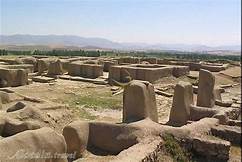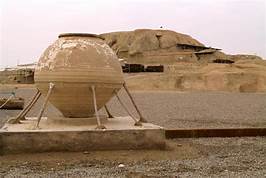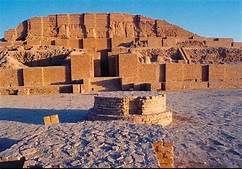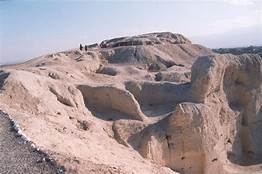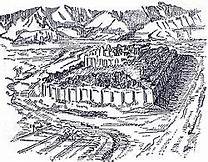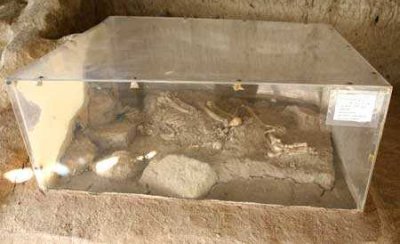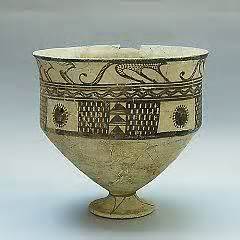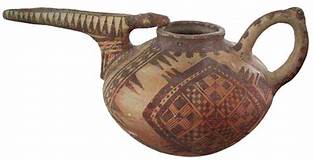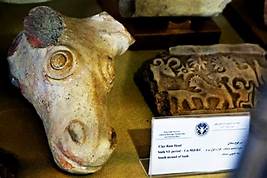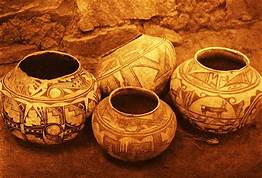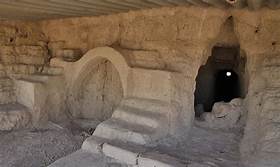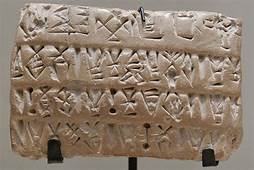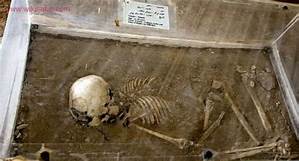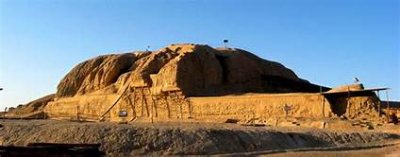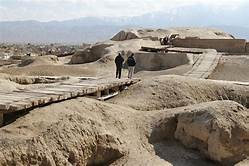Sialk Hills
Sialk Hills
About five years ago, with the floods in Kashan, a large, multi-thousand-year-old civilization was discovered, which surprised everyone. At that time, due to the ignorance of the people, the profiteers began to overthrow the hill and loot its ancient objects. Until one year, a French team from the Louvre Museum headed by Roman Gershman left for Iran, and by the eighth year, they had excavated these hills and obtained valuable artifacts.
Sialk after Jiroft Kerman is one of the historical places in which written documents belonging to the pre-Achaemenid period have been found. And the sun and iron weapons and swords and long spears have been found. Nearly five thousand years ago, the cave dwellers of the Iranian plateau turned to the plains after climate change. The oldest people in the plains were the Sialk people near Kashan. A civilization 3 years old!
Sialk Hill is actually a ziggurat or temple of the ancient people, which is built in the form of a brick and solid structure. Two cemeteries and a number of human bone have been found in them. The second phase of exploration in this area was carried out under the supervision of Dr. Shahmizadi, who achieved new results:
Ziggurat Sialk
Silkworkers Sialk
Hunter Sialk
The discovered houses all had walls lined with mud, and the dead were buried under the floor of the rooms, which did not have carpet bricks or paving stones.
One of the highlights of this area is the millennial pottery fragments on the ground. Also, finding spinning spindles shows the textile and textile industry in this region.
With the discovery of metal smelting furnaces in the southern part of the hill, the city of Silk can be considered one of the most industrial cities of that time. In archeological excavations, Silk civilization is divided into six periods:
The first and second periods are related to the oldest people of the northern hill, which is about 3,000 years old. They lived in temporary huts and built their huts with reeds and twigs and covered them with mud. After a long time, the houses were built with porcelain walls and in the second period with handmade bricks. Probably the people of the northern hills baked their dishes in the kiln.
In the second period, geometric patterns and animals and plants were used on the dishes. The people of this period were engaged in shepherding and farming, and by finding and extracting natural copper stones, they began to make ornaments. They buried their dead in the open, covering their bodies with a thin layer of azalea solution and gifts under their floors.
In the third period, that is, three years ago, the inhabitants of the northern hill moved to the southern hills and formed their houses with rectangular bricks. In the middle of this period, people used pottery wheels and baked pottery in the kiln. Human motifs can be seen on them. During this period, silk artisans learned how to extract silver from ore and made their ornaments and tools out of silver. One of the most important cultural phenomena at the end of the third period was the use of flat seals.
In the fourth period, which is 3,000 years ago, the urbanization period begins. The emergence of calligraphy and writing is primary. During this period, cylindrical seals engraved with animal forms were widely used, which is a sign of commercial prosperity during this period.
The fifth period, which is 5 years ago, is the period of migration of new immigrants. The most important achievement of this period is the making of pottery in gray, and the culture of burial was done in separate cemeteries.
The sixth period, which ranges from the 5th to the 8th years, is flattened and the graves are dug into the hills, some of which are covered with carved stones or large bricks, which probably indicates the status of the dead. .
Funeral pottery that is used for burial is one of the characteristics of this period. The geographical position of this hill is located in the southwestern side of this city and on the right side of Kashan-Fin road, ie Amirkabir street. Has been. Cemetery B is 6 years old and is located under the farms and gardens of the western side of the hill. Kashan Sialk Hill is included in the list of historical and national monuments of Iran on September 2, 2006 with the number 2 and in the list of temporary temporary monuments in the world. has taken.
فرم در حال بارگذاری ...
